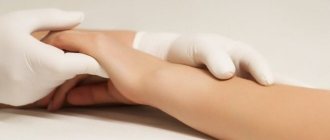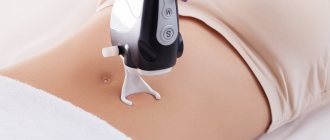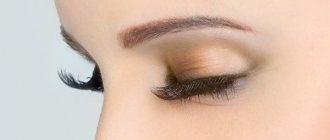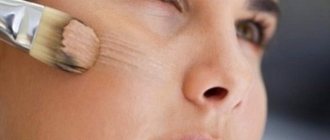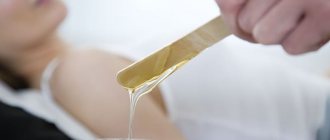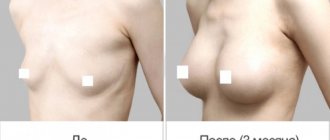Indications for lipofilling
It makes sense to use a rejuvenating technique for the following age-related changes:
- the brushes became wrinkled;
- the subcutaneous fat layer has noticeably thinned, making the arms look bony, the blood vessels have become more prominent, and the joints are protruding;
- the skin has become less dense and stretched due to an age-related decrease in its hydrophilicity;
- pigment spots appeared on the surface of the brushes, the so-called “senile buckwheat”.
Performing lipofilling will help eliminate all these shortcomings.
We recommend reading about lipofilling of the buttocks. You will learn about the procedure, indications and contraindications for it, post-treatment results, and the recovery period. And here is more information about breast lipofilling.
Own fat as an ideal preparation for the procedure
The tissues on the hands are very mobile; most people have thin skin. Exchange
processes in this area of the body proceed quickly. This leads to rapid resorption of the injected fillers.
But not your own fat. It is considered the optimal tool for rejuvenating the hands for several reasons:
- is not rejected, since it is a component of the body and does not provoke an allergic reaction;
- becomes a source of its own stem cells, promoting rejuvenating processes in tissues;
- takes root quickly, because fat for lipofilling of the arms is taken from the areas of the hips and knees, where the material has the most suitable structure and features.
Before replanting, the graft is thoroughly cleaned of impurities and enriched with substances that facilitate its absorption by tissues.
Where it all started
Photo from abc.net.au
The first hand transplant was performed in Ecuador in 1964. At that time, however, there were no high-quality methods of immunosuppression, that is, suppression of the host’s immune system, which begins to attack the foreign graft. The patient experienced rejection two weeks after surgery and the arm had to be removed.
In the 1980s, an important breakthrough occurred in the field of transplantation: effective drugs were created to prevent host versus graft conflict. But surgeons decided to undertake a new operation to transplant an arm, or rather a hand, only in 1998.
These were the Frenchman Jean-Michel Dubernard and the Australian Earl Owen. The latter was a microsurgeon and took part in a large scientific and practical work at the University of Louisville (USA), aimed at developing the technology of such an operation.
So, a new hand transplant was performed on September 23, 1998 in Lyon (France) and lasted 13 hours. The transplantation was considered successful, but the surgeons were not very lucky with the patient.
New Zealander Clint Hallam was a peculiar man. He lost his hand in 1984 in his homeland in Rolleston prison, where he was serving a sentence for fraud. The accident was the result of a prisoner's careless use of a circular saw.
Judging by how subsequent events unfolded, Hallam was one of those people who is not friendly not only with the law, but also with the routine rules of life. He often skipped taking immunosuppressive medications and did not particularly diligently do physical exercises to develop his hand, all of which needed to be done constantly and regularly.
Having not felt progress in the motor function of the new limb after two years - which is not surprising, given the circumstances - Clint Hallam stopped taking medications even occasionally, which could not but lead to a rejection reaction. As a result, at his request, British professor Nadey Hakim, who took part in the operation to transplant Hallam's hand, amputated it on February 2, 2001.
Method of hand lipofilling
The manipulation includes several stages:
- Under local anesthesia and maintaining sterility, adipose tissue is collected. Donor areas are the abdomen, but more often the knees or inner thighs.
Aspiration is carried out with a syringe with a thin needle or cannula through a puncture of the skin. A solution is first introduced there to promote the separation of fat.
- The resulting material is purified, bringing it to the state necessary for introduction into the tissue of the brushes. This is done using a medical centrifuge. There are different ways to prepare an autograft, but they all involve freeing it from unnecessary impurities and preserving the structure of fat cells.
- The finished material is placed in a sterile syringe. Under local or intravenous anesthesia, it is injected according to the diagram under the skin of the back of the hands. Cannulas with a rounded tip and a linear injection technique are used. Each arm needs 20 - 30 ml of fat. The material is placed in the space above and below the vessels, being careful not to touch them. A slightly larger volume is injected than necessary, since some of the fat will be absorbed during the rehabilitation process.
- Punctures are treated with an antiseptic. A bandage is applied to the hands and must be worn for 1 day.
The procedure takes place in a period of time from 1 to 1.5 hours.
Watch this video about hand lipofilling:
Recovery and rehabilitation after
At the end of lipofilling, the hands look slightly swollen, and pain may be felt for 8 to 10 hours. In order for the negative signs to go away quickly and the transplanted tissue to take root, the patient should:
- do not wet your hands with water for at least 2 days;
- treat punctures with an antiseptic;
- take care of your brushes for 7 - 10 days, that is, do not engage in any physical labor (washing dishes and floors, cooking, hand washing, carrying heavy objects, sports are prohibited);
- avoid overheating, that is, a bathhouse, solarium, beach, even taking a hot bath;
- do not drink alcohol, do not smoke.
More difficult than with the liver
Photo from salon.com
And yet, hand transplant surgery remains rare.
On the one hand, patients are not very happy with even modern high-tech myoelectric prostheses, since they are expensive, often break and, most importantly, are heavy to wear constantly. Here transplantation has a clear advantage so far.
On the other hand, transplant cases vary in the degree of success, which is influenced by the quality of the operation, the diligence of the patient, and how the body reacts to immunosuppressive therapy, which has certain side effects (often quite severe).
Not all recipients are as lucky as Jonathan Koch: Dr. Azari amputated his hand, which was affected by the disease, while preserving his own nerves and tendons. But most of those who lose an arm are victims of accidents, which leave doctors little choice in how much tissue can be saved.
What else is difficult about surgery?
When transplanting an entire organ, it is important for the surgeon to restore its blood supply, that is, the communication of blood vessels, but otherwise the organ is a conglomerate of cells of the same type, and they do not have to be co-opted into the same host tissue. This is why an organ transplant operation lasts less: a heart, for example, is transplanted in 6-8 hours.
A hand transplant is a completely different matter. Here we are dealing with a whole range of fabrics. These are bones, tendons, muscles, nerves, skin. All of them need to be connected very precisely and carefully with the recipient’s tissues so that they take root. And one more important point that fundamentally distinguishes such an operation from an organ transplant: it is necessary to preserve the conductivity of the nerve impulse, which will allow motor manipulations to be performed at the will of the new owner of the limb.
This type of surgery is called vascularized composite tissue complex transplantation (VCA - Vascular Composite Allograft). The technology began to develop with hand transplantation, but was not limited to it: there are successful cases of larynx and even face transplantation.
But the first and so far only transplantation of both legs, performed in 2011 by the Spanish doctor Pedro Cavados, was unfortunately unsuccessful: the recipient was forced to stop taking immunosuppressive drugs due to severe side effects, and the new limbs had to be amputated.
This is a very serious problem with this type of surgery. One of the tissues that makes up the hand is the skin, and the leg, especially two legs, is an even larger area of skin tissue, which is one of the most immunogenic, along with lymphatic tissue, which is also present in the limbs.
This is why composite rejection is more likely than organ rejection, be it heart or liver, and the recipient of a new hand has to take more different drugs to suppress the immune system with greater health risks than the recipient of an isolated organ.
Real effect before and after
In the first days of the recovery period, the hands look a little plumper than we would like. But when the swelling goes away after a few days, you may notice that:
- the back surface of the hands has become smoother, more even, more voluminous;
- veins and tendons do not bulge;
- wrinkles disappeared;
- the brushes do not look bony;
- the fingers became straight, and the joints became less prominent.
The final result is assessed after 2 - 4 months, when the transplanted tissue has taken root. Up to 30% of fat is absorbed, and therefore the effect may be insufficient. Then they repeat the procedure. But in most cases, a single session is enough.
Can there be complications?
Despite the simplicity and low invasiveness of lipofilling, it can lead to problems:
- swelling of the hands;
- hematomas;
- infections in the area undergoing the procedure;
- asymmetry.
Swelling of the hands
An increase in pain, swelling, redness of the skin or its darkening are undesirable signs. They need to go to the doctor as soon as possible to prescribe treatment. Asymmetry can also be corrected, bruises resolve on their own.
Complications after hand lipofilling are rare. They are caused by incorrect actions of a specialist or ignoring the rules of the recovery period.
Surgeons don't give up
Dr. Cody Azari with patient Jonathan Koch.
Photo from universityofcalifornia.edu But at the same time, the Louisville group of scientists continued to work hard on developing the technology, and their efforts bore tangible fruit.
On January 14, 1999, a hand transplant was performed on New Jersey resident Matthew Scott, who at age 24 was the victim of a fireworks accident. That spring, Scott celebrated the success of the operation by throwing the first symbolic pitch, at the request of the Philadelphia baseball team, during the opening ceremony of the baseball season.
The Louisville group continued its work, and in 2021 it already had 12 successful hand transplants in 10 recipients (two received two new hands each). In total, surgeons have already performed more than 70 such transplantations around the world.
By the way, Jean-Michel Dubernard did not despair after the first failure, but took into account his mistakes and continued this difficult work. On January 14, 2004, he publicly announced the success of transplanting both hands, and the recipient had lived with them for 5 years by that time.
According to the 2011 International Hand Transplant Registry, sensory and motor function continue to develop up to 5 years after transplantation, and the number of activities that the new hand can perform during this period increases.
Patients can eat, drive, groom themselves, and write. Some report returning to their previous jobs and achieving much greater success than with a prosthesis.
But last year’s case, called by the American press “a truly Hollywood story.” It happened to the executive director of one of the Hollywood companies, 51-year-old Jonathan Koch. Koch was able to perform simple movements with his transplanted hand just a week after the 17-hour operation, which was performed by Dr. Cody Azari, who heads the Hand Transplant Program at the University of California (Los Angeles, USA) and is considered one of the luminaries of surgery.
Contraindications
The procedure is not performed in the following cases:
- poor blood clotting;
- oncology;
- inflammation of the skin of the hands or deeper tissues;
- exacerbation of a chronic disease;
- infection;
- mental disorder;
- diabetes.
All of these are contraindications to lipofilling. It is also not given to pregnant and lactating women.
We recommend reading about rehabilitation after lipofilling. You will learn about the rules of recovery after the procedure, possible complications during lifting of the face, chest, lower eyelids, and buttocks. Read more about hand mesotherapy here.
Cost of the procedure
Hand lipofilling costs 45,000 - 120,000 rubles. This range of prices is determined by the complexity of the liposuction procedure that precedes it, the qualifications of the doctor, the method of preparing the adipose tissue, and the method of anesthesia. The cost also depends on the number of sessions.
The effect of lipofilling will last for several years. It can be supplemented with laser rejuvenation. And, of course, don’t forget about daily hand care.
Similar articles
- Biorevitalization of hands: preparations for skin beauty, how...
The cosmetic procedure of biorevitalization of hands will return beauty to the skin. What medications are used for it? How is hyaluronic acid applied? What are the contraindications? Read more - Breast lipofilling: indications, contraindications, price
Breast lipofilling seems to be a simpler method of correction than plastic surgery. However, you should prepare for it, and also know the negative aspects. Read more
- Lipofilling: rehabilitation, complications after...
Proper rehabilitation after lipofilling can help avoid many complications. They can occur regardless of the area being corrected - in the chest, face, buttocks, lower eyelids, etc. Read more
- Lipofilling of the buttocks: how it is carried out, rehabilitation...
A beautiful butt and toned buttocks are the dream of many women. If nature has not provided a beautiful part of the body, lipofilling of the buttocks will solve the problem, and the before and after result will please any beauty. How long does rehabilitation take and how long does the result last? Read more
So is it worth it or not?
Photo from mirror.co.uk
This question does not arise with internal organ transplantation. A heart transplant saves the life of a person who would die without it, and this justifies both the risks of surgery and the dangers associated with lifelong immune suppression (increased risk of dying from infection or cancer, negative side effects).
In the case of a hand transplant, it is not about saving life, but about improving its quality. Is the game always worth the candle, as they say?
There is no definite answer here, and a lot depends on the patient himself. As we know from history, it is very important that he understands the limitations that accompany life with a transplanted arm, and is prepared to strictly follow all the doctor’s instructions, take medications, courses of physical therapy, daily exercises, constant contact with medical workers and monitoring his condition.
Even worse, you need to be psychologically prepared for the fact that rejection does happen, and then an operation to amputate the graft will be required.
The American Association for Reconstructive Transplantation (ASRT), founded in 2008, has formulated a number of preparatory steps that it recommends before deciding whether or not to undergo a hand transplant.
First of all, this is a comprehensive assessment of the physical condition of the potential recipient and the surgical plan and prognosis for recovery and rehabilitation based on it. It is necessary to exclude those diseases that will not allow the use of immunosuppressive drugs.
This is followed by a comprehensive psychological and social assessment of the patient. It is important to assess how much the loss of a limb affects his physical and moral condition, to weigh the balance of the benefits of living with a transplanted hand and the new difficulties that will arise for a particular patient after the transplant.
Finally, it is necessary to understand how motivated the patient is and is able to do everything in his power to achieve success.
